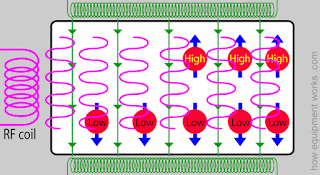Hi everyone!
This was my third week at SRP and I have started to get a clearer understanding of where my project is headed and how I'm going to get there. To start off, I spent this week with less time with my mentors and more time with people behind the scenes. I shadowed MRI technicians, who are the people that actually operate the MRI to scan whatever area needs to be scanned and learned that they are the ones to get the first look at the MRI scans. Most importantly in my third week at Mayo I learned that unlike what they show on Grey's Anatomy, these people are not surgeons. Instead, they are responsible for preparing the patient for the procedure and properly positioning them in the scanner. By shadowing the tech's, I learned that protocols are a combination of MRI sequences to optimally assess a particular region of the body. If this is a little confusing try to think of someone taking a test. Ideally, they would want to get a 100% but to do so, they would need to pick all the correct answers for every question. Just like this, when running a protocol, technicians must set the "correct" settings to effectively scan the patient to get the needed images. Radiologists are the ones who make the protocol, based on the patient's condition, and the MRI tech's are the ones who run the MRI protocol on the MRI.
While shadowing the technicians, I got an opportunity to run one of the scans myself and I even got up close and personal with the MRI machine! When I went inside the room with the MRI I was reminded 100 times not to bring in my phone or credit card because the magnet is so strong that it erases the credit card and renders it useless. For some reason I had been under the impression that every time the MRI machine was not in use, the technicians turned it off somehow and turned it on again every time it was needed. But the closer I got to the machine, I could feel how strong the magnet was because the magnetic part of my lanyard containing my badge was floating mid-air towards the MRI and I had to fight against the pull of the magnet to stay in one spot! While that experience was very exhilarating, actually running one of the scans was very interesting too. Although the technicians told me exactly what to input for the protocols and all I really did was click the buttons they instructed me to, I learned that running the scans requires a lot of prior knowledge about over a thousand protocols.
This week was much more hand-on than before and an unforgettable experience, especially with the MRI magnet pulling me towards it! Hopefully next week will be just as eventful!




